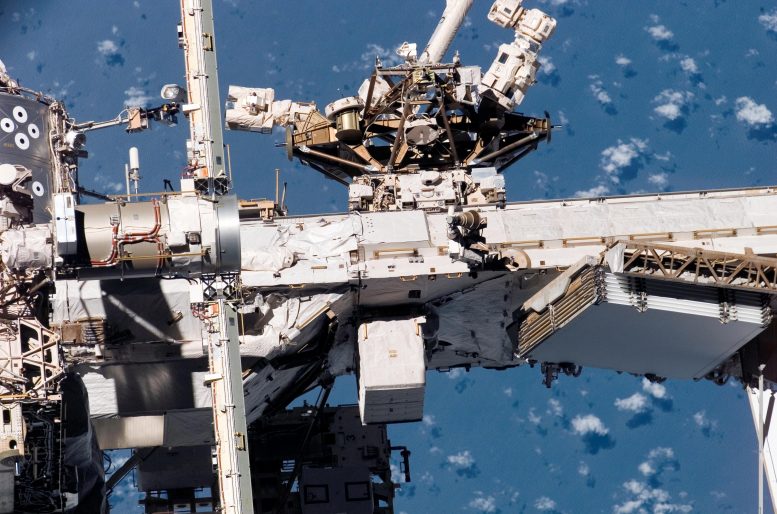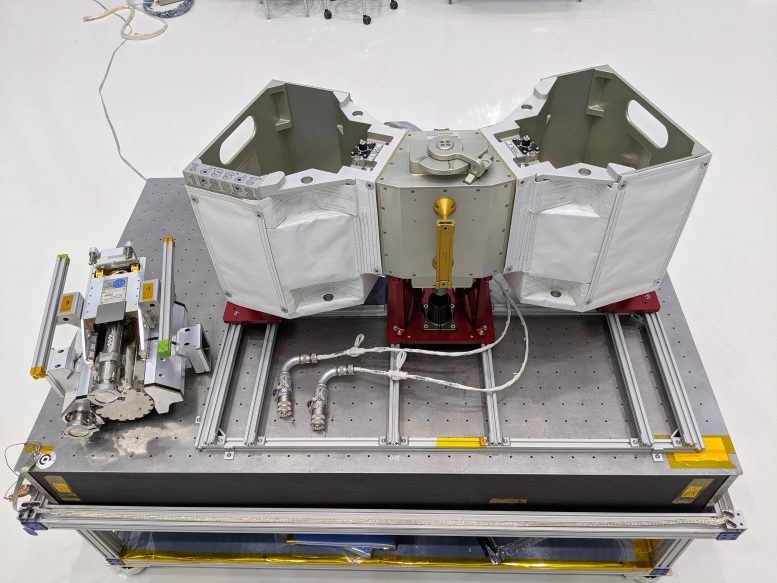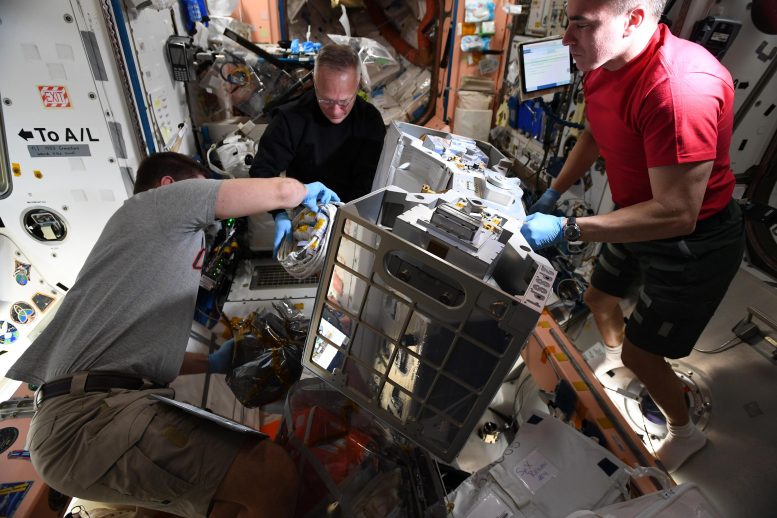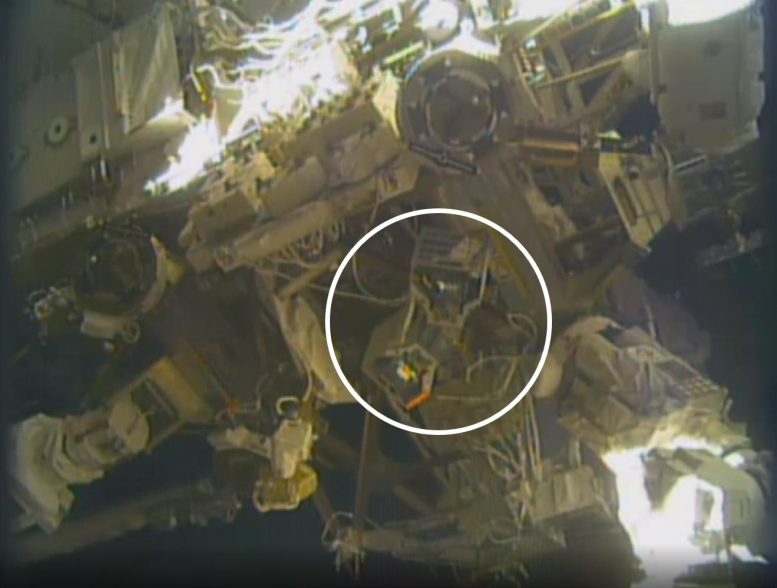
 RELL Engineering Development Unit (left) pictured alongside RiTS. Credit: NASA
RELL Engineering Development Unit (left) pictured alongside RiTS. Credit: NASA“RiTS provides thermal and physical protection for tools stored on the outside of station, not only freeing up room on board but also allowing the Canadian Space Agency’s Dextre robot to access them more quickly,” said RiTS Hardware Manager Mark Neuman.
The first step in the RiTS installation process involved preparing the unit inside the space station. The astronauts unpacked RiTS’ occupants from storage – two units of a tool called the Robotic External Leak Locator (RELL) – and affixed them inside RiTS’ aluminum housing.

Astronauts Robert Behnken, Doug Hurley, and Chris Cassidy prepare RiTS for installation. Credit: NASA
“RELL is a great example how robots with the right tools can simplify life for astronauts,” said Neuman. “Dextre can use RELL to detect ammonia leaks, eliminating the need for astronauts to perform the same task during a spacewalk.”
The ability to locate and repair ammonia leaks efficiently is important since ammonia is used to operate station’s cooling system.

The Mobile Base System moves on the Mobile Transporter rail car along truss rails covering the length of the space station. It provides a movable platform for Canadarm2 and Dextre and can access any of eight worksites that feature power connections. Credit: NASA
The installation of RiTS makes the leak location process much more streamlined. Before RiTS, the RELL tools were stored inside the station, and deploying RELL depended on airlock availability and involved waiting an additional 12 hours to allow for RELL’s gas analyzer to clear itself of internal gases. With RiTS, the only variable is Dextre’s availability, expediting the search for leaks.
After it was prepared on station, RiTS – loaded with the two RELL units – was sent outside with the spacewalking astronauts who attached it to the MBS. This was the first task during a spacewalk to upgrade International Space Station systems. The installation required the astronauts to mechanically attach RiTS to an available worksite socket then mate two electrical cables to unused power outlets on the MBS. The power connection was critical to enabling heaters within RiTS that keep the RELL tools from getting too cold.

RiTS installed on the space station. Credit: NASA TV
Although RiTS will be used on the station, human-robot collaborations like this have the potential to be applied to other endeavors that involve human habitats in space, including Gateway.
RiTS was developed by NASA’s Exploration & In-space Services projects division at the agency’s Goddard Space Flight Center in Greenbelt, Maryland, in partnership with NASA’s Johnson Space Center in Houston.
No comments:
Post a Comment